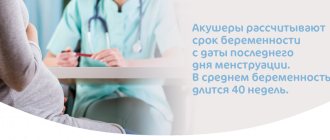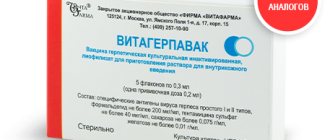Normal indicator for pregnant women in the first trimester
To identify genetic disorders, pregnant women must systematically undergo ultrasound diagnostics. The study allows you to determine the presence of anomalies in the early stages.
During the examination, phonometric indicators are assessed. In this case, the main criterion is to determine the thickness of the collar space (TN). Its norms are 0.7-0.8 mm.
The structure of the facial structures and skull is also studied, parameters and the presence of the nasal bone are determined (can be detected by the 10th week of pregnancy). Closer to the 12th week, its size ranges from 2 to 3 mm.
Additionally, the fetal heart rate is measured and the blood flow in the venous duct is assessed, since disturbances in it may indicate the development of a pathology such as Down syndrome.
The determining values are the parameters of the coccygeal-parietal and biparietal region:
| Index | Gestational age | Norm |
| Coccyx-parietal size | 11 week | 34-42 mm |
| 12 week | 42-51 mm | |
| Week 13 | 51-63 mm | |
| Nasal bone | 11 week | Considered but not measured |
| 12 week | 2-3.1 mm | |
| Week 13 | 2-3.1 mm | |
| Heart rate (HR)/min. | 11 week | 153-165 |
| 12 week | 150-162 | |
| Week 13 | 147-159 | |
| BDP (biparietal size) | 11 week | 13-17 mm |
| 12 week | 18-21 mm | |
| Week 13 | 20-24 mm | |
| LZR (fronto-occipital size) | 11 week | 19-21 mm |
| 12 week | 22-24 mm | |
| Week 13 | 26-29 mm | |
| hCG (ng/ml) | 11 week | 17,4-130,4 |
| 12 week | 13,4-128,5 | |
| Week 13 | 14,2-114,7 | |
| PAPP-A (mU/l) | 11 week | 0,46-3,73 |
| 12 week | 0,79-4,76 | |
| Week 13 | 1,03-6,01 |
General information
Edwards syndrome (also called trisomy 18 syndrome) is a chromosomal disease characterized by multiple malformations and trisomy 18 chromosomes. This disease was first described by John Edwards in 1960. This disease is rarely diagnosed - as statistics show, in the world it occurs with a frequency of 1:5000. It has been noted that children with this pathology are more often born to mothers of mature age. Thus, the probability of giving birth to a baby with this pathology for a woman over 45 years old is 0.7%. The risk increases if the expectant mother has diabetes .
Moreover, girls with this pathology are born three times more often than boys. Edwards disease is a very severe pathology, in which survival after a year is 5–10%.
How this disease is diagnosed and what causes its development will be discussed in this article.
Deviation rates
Trisomy 21, 18, 13 is determined using various diagnostic methods, so testing them during pregnancy is considered mandatory.
The presence of abnormalities can be determined using ultrasound. However, diagnosis in the first weeks of pregnancy is ineffective. In this regard, it is recommended to undergo other research methods.
The most informative and frequently prescribed examination is a blood test and fetal biopsy.
Blood is drawn from the mother. When assessing indicators, accepted standards are taken into account. The condition can be assessed using indicators such as pregnancy-associated plasma protein A (PAPP-A) and human chorionic gonadotropin (hCG).
Low levels of PAPP-A and hCG clearly indicate one of the chromosomal abnormalities. An increased level of indicators indicates problems with bearing a child.
Symptoms and signs
Signs of Down syndrome are a wide range of features and characteristics: there is a wide range of mental retardation and developmental delays. Some babies are born with heart defects, others are not.
Some children have conditions such as epilepsy, hypothyroidism or celiac disease, others do not.
At birth, babies show certain symptoms of Down syndrome:
| Characteristics | percent | Characteristics | percent |
| Mental disorder | 99% | Abnormal teeth | 60% |
| Stunting | 90% | Slanted eyes | 60% |
| Umbilical hernia | 90% | Shortened arms | 60% |
| Enlarged skin at the back of the neck | 80% | Short neck | 60% |
| Low muscle tone | 80% | Obstructive sleep apnea | 60% |
| Narrow roof of the mouth | 76% | Bent tip of the fifth finger | 57% |
| Flat head | 75% | Brushfield spots on the iris | 56% |
| Flexible ligaments | 75% | Single transverse fold on the palm | 53% |
| Proportionally large tongue | 75% | Protruding tongue | 47% |
| Abnormal outer ears | 70% | Congenital heart defect | 40% |
| Flattened nose | 68% | Strabismus | ~ 35% |
| Separation of the first and second fingers | 68% | Undescended testicles | 20% |
People with Down syndrome usually have some degree of disability. Mental and social developmental anomalies mean that the child may have:
- impulsive behavior;
- difficulty thinking;
- attention deficit;
- learning difficulties.
Medical complications often accompany the syndrome:
- congenital heart defects;
- hearing loss;
- poor eyesight;
- cataracts (cloudy eyes) hip problems such as dislocations;
- leukemia;
- chronic constipation;
- dementia (problems of thinking, memory);
- hypothyroidism (low thyroid function), obesity;
- Alzheimer's disease in later life.
They are more prone to infection and more often suffer from respiratory, urinary tract, and skin infections.
The main causes of chromosomal mutation
At the moment, the exact causes of the development of disorders are being studied. However, experts identify several predisposing factors that increase the chances of having children with chromosomal abnormalities.
Trisomy 18/21/13
Possible reasons:
- age over 30 years (for women);
- age over 40 years (for men);
- hereditary factor (there are relatives in the family with genetic disorders in the chromosomal series);
- problems during a previous pregnancy - frozen pregnancy, miscarriages, abortions;
- infectious diseases that arose during the period of conception of a child or directly in the first stages of pregnancy.
An altered number of chromosomes (aneuplody) is observed in children born to women over 35 years of age. At the same time, the risk of developing such disorders is 1%.
Forecast
Edwards syndrome, like other genetic diseases (trisomy 16, trisomy X), is an incurable disease.
Like any other genetic disease, Edwards syndrome has no cure. However, symptomatic treatment is possible to make life easier for this child, including surgical treatment of defects accompanying the syndrome.
Children with the full form of the syndrome rarely live beyond the age of one year. According to statistics, about 60% of children with this disease die before the age of 3 months. Only 5-10% of such patients survive to one year of age, and only about 1% of children survive to 10 years of age. On average, boys live 2-3 months, girls - 10 months. Patients remain oligophrenic forever.
But if these children are given good care and treatment, in some cases they can live longer and have a higher quality of life. They can learn to recognize loved ones, eat on their own, and smile.
Children with the mosaic form of the disease have a higher chance of living a more fulfilling life.
What varieties are there?
The pathology is classified depending on the affected pair of chromosomes. Each type of disorder has its own name, manifestations, characteristics and other distinctive features.
Trisomy 13, Patau syndrome
This disorder is rare and occurs with equal frequency in both sexes. Moreover, the risks of developing the syndrome increase with increasing age of the parents. The presence of the disease can be determined from the 9th week of pregnancy using ultrasound or blood tests.
Causes
Trisomy 21, 18, 13 can occur as a result of various provoking factors, which are almost impossible to determine exactly.
At the moment, the exact origin of the anomaly is unknown. Most experts are inclined to the version of a random genetic disorder in chromosomal pairs. Pathology develops as a result of the formation of an additional chromosome in the 13th pair. The influence of somatic disorders, infectious diseases, bad habits and other factors has not been established.
Signs
Symptoms of the pathology are diverse and affect many different systems and internal organs.
Signs:
- small body weight – up to 2.5 kg;
- asphyxia (suffocation);
- abnormal brain development;
- defects in the structure of the face and skull;
- disorders of the central nervous system - hydrocephalus, underdevelopment of the cerebellum, cataracts, deafness, damage to the optic nerve;
- congenital heart defects;
- focal absence of hair or skin;
- altered structure of the foot - absence or presence of toes;
- abnormalities in the urinary system;
- malformations of the digestive tract;
- underdevelopment of the musculoskeletal system;
- abnormal structure of the reproductive and reproductive systems.
Children with Patou's syndrome are developmentally delayed (mental and physical delays).
What newborns look like
Pathology can be determined by the appearance of the baby. Children with the disease are characterized by a small head circumference, a low and sloping forehead, and narrow eye openings. The bridge of the nose is flat and falls slightly into the inside of the skull.
At the same time, the development of other facial defects (cleft palate, cleft lip) is also noted. The ears are also subject to deformation and are located lower than in healthy children.
Forecast for children
The prognosis for the disease is unfavorable. More than 95% of all newborns die in the first months after birth. The remaining percentage of children have severe disorders of psychomotor development, including complex forms of idiocy.
Trisomy 18, Edwards syndrome
Trisomy 18 differs from disorders in chromosome pairs 21 and 13. The pathology ranks 2nd among chromosomal disorders and is characterized by abnormalities in the structure of various internal organs and systems.
According to statistics, the majority of girls are affected by the disease.
Pathology is divided into 3 main forms - complete, partial and mosaic.
Causes
Pathology occurs when an additional pair of chromosomes is formed. This factor may be influenced by various reasons. At the same time, a relationship has been established between the frequency of development of the disorder and the age of the mother - the older the woman, the greater the risks.
Possible factors:
- mother's age over 40 years;
- bad habits (smoking and alcohol);
- taking medications (especially in the 1st trimester of pregnancy);
- infectious diseases of the reproductive system (research not conducted);
- radiation.
In some cases, the disease develops as a result of a genetic predisposition.
These factors are only an assumption, since at the moment the exact causes of the pathology are unknown. It is believed that when a child is born with Edwards syndrome, the risk of having a subsequent child with similar anomalies is 2-3%.
Signs
With this pathology, pregnancy proceeds with disturbances. During pregnancy, oligohydramnios, low fetal activity, and small placenta are observed.
After birth, the child himself has various anomalies in the structure of systems and internal organs.
Signs:
- low body weight (up to 2170 g);
- asphyxia;
- congenital heart defects;
- pathologies of the gastrointestinal tract (hernias, fistulas, atresias);
- abnormalities in the genitourinary system;
- malformations of the central nervous system - hydrocephalus, hypoplasia, cysts;
- problems with swallowing, sucking, breathing;
- mental retardation, imbecility, idiocy.
In most cases, additional disorders develop due to complications of the pathology.
What newborns look like
External signs of the disease are characterized by abnormalities in the structure of the head and limbs. Skin signs also predominate.
External signs:
- dolichocephaly – long and narrow skull;
- microcephaly – discrepancy between the size of the head and the body (skull size is too small);
- low location of the ears - cartilage reliefs are little pronounced or completely absent, narrowing of the ear canal, absence of a lobe and nodule;
- non-fusion of the soft or hard palate, lips;
- changes in the foot and toes - abnormal length of the toes, clubfoot, fusion of the toes;
- underdevelopment of the penis and hypertrophic changes in the clitoris;
- flexor position of the hands.
Also, a child with this syndrome exhibits inadequate emotional reactions, sometimes even to the point of their complete absence.
Forecast for children
The prognosis for pathology is almost always unfavorable. About 55% of children with anomalies do not survive beyond 3 months of age. About 10% of newborns survive to 1 year.
Children who live to older ages have health problems and need constant care. To prolong a child’s life, it is necessary to perform complex operations on the heart, kidneys or other organs. Children with Edwards syndrome have virtually no chance of a full and long life.
Trisomy 21, Down syndrome
Trisomy 21, 18 and 13 are diagnosed in most cases in children born to parents over 40 years of age. Among the most common genetic disorders, the 1st place is occupied by the pathology of the 21st chromosome series.
Down syndrome is a genetic disorder that affects 1 in 700 babies.
Pathology occurs as a result of nondisjunction of chromosomes in the male reproductive cell. However, according to statistics, the additional chromosome is transmitted from the woman in 88% of cases, from the father - in only 8%. In other cases, the anomaly occurs as a result of improper cell division after fertilization.
Causes
At the moment, there are only 2 main reasons why the disease develops. The first of these is the age of the parents. The larger it is, the higher the risk of the syndrome.
For parents aged 35-40 years, the risk of having a child with a genetic abnormality is 1 in 1000. After 40 years, these risks increase significantly and amount to 1 in 60.
The second reason for the development of the disorder is heredity. If there are or have been relatives in the family with similar pathologies, the risk of developing this disease increases significantly. The disease can also occur in children born from marriage with blood relatives.
It is believed that factors such as poor environmental conditions, bad habits, and radiation do not affect the birth of children with Down syndrome. The exact mechanisms and causes are currently being established.
Signs
Children with a genetic disorder have characteristic external signs. The presence of pathology can be determined even at the stages of bearing a child during an ultrasound.
Symptoms:
- disproportionate size of the head compared to the rest of the body (skull size is too small);
- low body weight at full gestation;
- delayed physical, mental and mental development;
- cardiac disorders - heart defects (heart failure), shortness of breath, hyperhidrosis, presence of murmurs;
- disorders of the digestive tract - intestinal obstruction, dyspeptic disorders, obstructive disorders in the duodenum;
- concomitant diseases - eye diseases, hearing problems, skin manifestations;
- tendency to obesity, the occurrence of Alzheimer's disease, and the development of infertility.
In the first days and years of life, children with pathology develop various respiratory and inflammatory diseases, which is why they die in the absence of timely help.
What newborns look like
Trisomy 21, 18, 13 has similar external and internal signs, so additional research is required to make an accurate diagnosis. Externally, children with Down syndrome have significant differences from healthy children. Thus, they have various defects in the structure of the body, limbs, and head.
External signs:
- in profile the child's face is flat;
- microcephaly (not observed in all cases);
- flat nose;
- formation of skin folds around the back of the neck;
- narrow section of the palpebral fissures (Mongoloid type);
- Brushfield spots (white spots on the iris);
- slightly open mouth;
- protruding tongue;
- monkey fold on the palms;
- shortened fingers;
- the presence of 2 phalanges on the fifth finger.
A shortened neck, small ears and wide hands are also noted.
Children experience hypermobility (joint mobility). This is due to underdevelopment of connective tissue.
In rare cases, some newborns show signs of chest and spinal deformities.
Forecast for children
The disease has the most favorable prognosis among all chromosomal disorders. This is due to the fact that the disorder does not have such critical defects and anomalies in the structure of internal organs and systems.
Qualified medical care and care in the first years of a child’s life can reduce the risk of mortality, since during this period of time the newborn is susceptible to the development of respiratory diseases, to which a child with Down syndrome is predisposed.
With properly organized child care, life expectancy is 40-45 years.
Pathogenesis
Trisomy 18 is a genetic pathology. Each human cell contains 46 chromosomes - these are normal values. During fertilization, 23 chromosomes of female and male germ cells combine and give a total of exactly this number of chromosomes. Sometimes, for unknown reasons, genetic mutations occur, and as a result, an extra 47th chromosome appears, additional to the 18th pair. An extra chromosome appears in gametes as a result of chromosome nondisjunction during meiotic division. In most cases - 95% - it is the extra chromosome that causes the development of Edwards disease. But sometimes - in about 2% of cases - the sum of chromosomes remains normal, but chromosome 18 is abnormally lengthened, which leads to the development of congenital pathology. In another 3% of cases, mosaic trisomy is observed, in which an additional chromosome is not present in all cells of the body, but only in some part of it. All three forms of the syndrome follow the same type. But still, a more severe course is observed in the first form of the disease.
Can a chromosomal mutation be cured?
Chromosomal abnormalities cannot be clinically cured. The vast majority of children die in the first months of life. With proper care and medical assistance, the chances of extending the child's life increase. However, constant monitoring, complex operations and care for such patients are necessary.
The most dangerous condition for a child's life is Down syndrome. With this disease, the chances of living longer than 30-40 years are several times higher than with other chromosomal abnormalities.
At the moment, the issue of defects in the chromosomal series is being studied by specialists, but effective methods for treating pathologies have not yet been developed.
Trisomy in the 18, 21 or 13 chromosome series is a life-threatening disorder for the child, therefore, before conception and during pregnancy, the expectant mother should take into account all the risks of developing pathology and undergo systematic research to identify signs of abnormalities in the early stages.
Diet
Diet when planning pregnancy
- Efficacy: no data
- Timing: 3-5 months before planned pregnancy
- Cost of products: 1800-2000 rubles. in Week
Children with this pathology require special nutrition. In severe cases, in the absence of swallowing and sucking reflexes, feeding is carried out through a tube.
Expectant mothers before and after conception need to eat healthy, without consuming harmful foods or alcohol.
Early screening for trisomy risk
In order to detect the presence of deviations in time, it is enough to register for pregnancy in a timely manner at the antenatal clinic. The first screening is carried out at three months and can reveal abnormalities in the development of the nuchal region in the fetus - one of the main manifestations of trisomy 21 in the early stages.
In children with an extra chromosome, excess fluid accumulates in the collar area; doctors can see this alarming indicator on an ultrasound. If the expansion in the controlled area exceeds the basic 5 mm already at week 13, then it is worth taking a blood test for the hormones hCG, b-hCG and Papp-A. Their increased concentration indicates the need for further clarification of individual risk indicators. The study results indicate biochemical risk + nt, which means nuchal translucency. For example, numbers 1:150 indicate that the risk is high, 1:10000 - no need to worry, there is no danger.
The “triple test” - a blood test of the expectant mother for alpha-fetoprotein, estriol, inhibin-A and hCG - allows you to identify pathology at an early stage with high reliability. The obtained indicators are compared with age norms. A combined analysis is more accurate; it often happens that an in-depth examination shows normal values and removes suspicion.
The second time it is necessary to carry out the diagnosis at 15-20 weeks. Ultrasound more accurately shows the presence of abnormalities in fetal development. Pathology at this stage is characterized by:
- additional fold on the neck;
- improper development of fingers;
- deviations in the development of the skull;
- lack of nasal bone;
- short length of the iliac bones and a large angle between them;
- defects in the development of internal organs - heart, kidneys, cerebellum;
- cerebral vascular cysts.
All stages of fetal development have been well studied and at various stages doctors compare the sizes of the head, chest, and limb lengths with the norm. If the expected growth does not coincide with the actual one, then it is necessary to establish the cause of the pathology. To clarify the diagnosis, an analysis of the amniotic fluid is performed. If the risk is increased, the woman will be referred for additional studies. However, just because the risk of trisomy 21 is high does not mean that the child is necessarily sick.
During the second trimester, pregnant women over 30 often have a blood test taken to measure the level of the marker AFP. This is a protein produced by the liver. A reduced amount of AFP in a woman’s blood indicates a high probability of diabetes, and an increased amount indicates abnormalities in the development of the baby’s neural tube.








